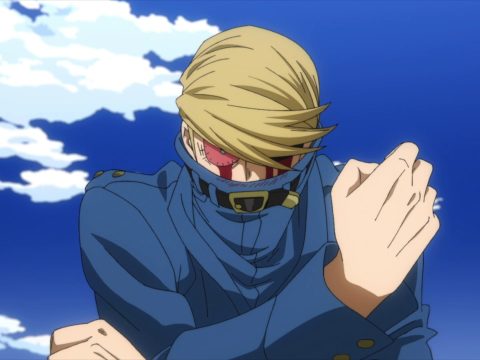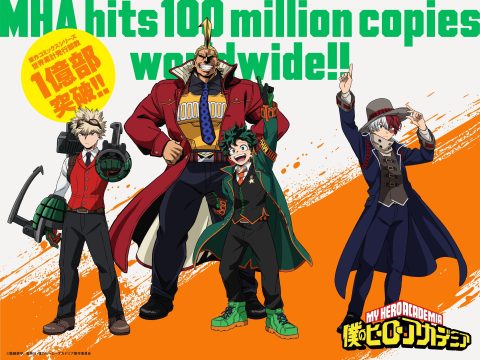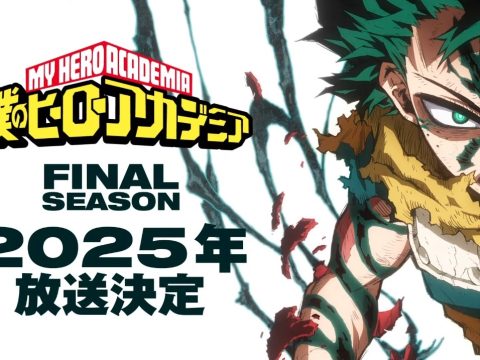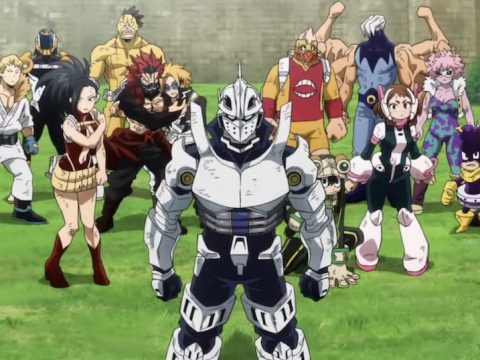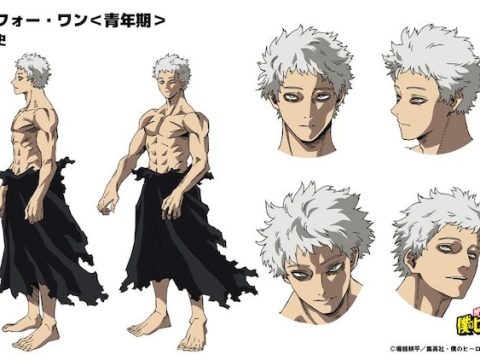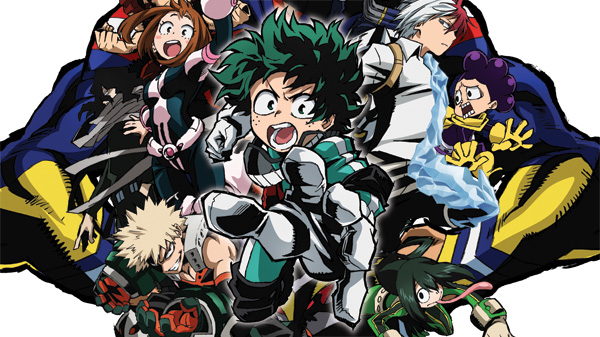
The best heroes of shonen manga have defined themselves by their ability to leap countless miles beyond whatever limitations may be holding them back. Maybe it’s some stringbean kid who thinks he’s going to be King of the Pirates, or a ninja-in-training who seems too goofy and irresponsible to ever really become Hokage. In our heart of hearts, though, we know they can do it, and that’s why we instinctively believe in the hopes and dreams of Izuku Midoriya. The squat, underpowered lead of My Hero Academia may not have the kind of innate powers that make the majority of the population special, but he’s still gunning for that number one spot.
Kohei Horikoshi’s Shonen Jump manga made a splash as soon as it debuted in Japan, and for good reason. It’s action-packed, full of oddball characters, and filters the high-flying heroics of American comics through a decidedly manga lens. Take the fun of the manga and inject it with an explosive amount of color and you’ve got something even better: another killer anime adaptation from BONES.
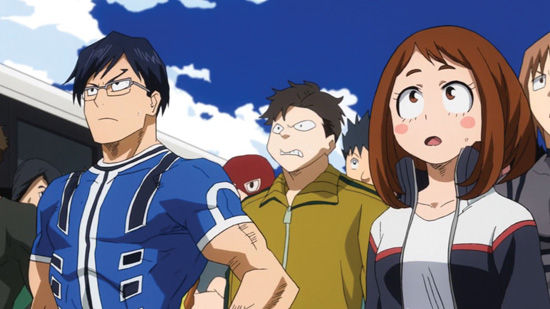
I Wanna Be The Guy
The easiest way to think of My Hero Academia’s world is to picture, say, Marvel’s X-Men in reverse. While regular, powerless civilians aren’t persecuted in any way, they are the minority in this situation. The odds of not developing a “Quirk”—the series’ quaint term for special abilities—within one’s formative years are on the low end, which makes the fact that Izuku Midoriya never manifested one all the more crushing. To add insult to injury, he’s a total superhero nerd! He follows all the latest heroic happenings, especially when they pertain to the number one hero in the city, All Might. There are simply none stronger, faster, or more good natured than this shining beacon of a man, and Izuku would give anything to be as amazing and selfless as him one day.
Despite all the bullying he receives at school from literal hothead Katsuki Bakugou—who has the power to sweat nitroglycerin and create explosions with his palms—Izuku won’t remain Quirkless for long. Thanks to a spur-of-the-moment decision to recklessly leap in to save Katsuki from the grasp of a villain, Izuku catches the eye and respect of All Might himself. Thus, the vaunted hero takes Izuku under his wing and bestows his super-strength Quirk, “One For All,” on our plucky little lead. The rest may not be history, but it is the start of the long, hard, and determined road to higher heroic education that makes up the meat of My Hero Academia.
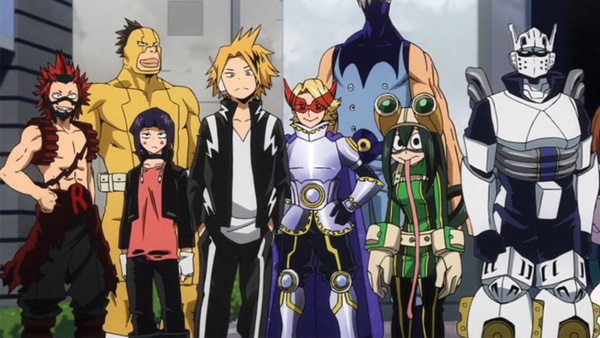
What follows is pretty much par for the course as far as shonen storytelling goes, but it’s the execution that really puts My Hero Academia in a league of its own. Kohei Horikoshi puts himself up there with the best of the heavy-hitters thanks to his ability to deliver solid action, character beats, comedy and, most importantly, payoff in the form of emotional highs and devastating lows. From the ups of superhero training to the downs that come along with the reality of facing off against real villains, My Hero Academia keeps the hits coming, and BONES’ adaptation even manages to top the excitement of the source material.
In a world of top dog Jump adaptations that get left to the lackluster standards of most Toei Animation productions, including the likes of One Piece and World Trigger, My Hero Academia’s anime adaptation is an impressive piece from top to bottom. The love that director Kenji Nagasaki (Gundam Build Fighters, No. 6) and his staff—which includes Yousuke Kuroda (Ring ni Kakero, Jormungand) on series composition and Yuuki Hayashi (Kiznaiver, Haikyu!!) on music, among others—put into the show is as clear as the fact that All Might will inevitably make some kind of devastating heroic sacrifice (if the manga hasn’t had him do it already).
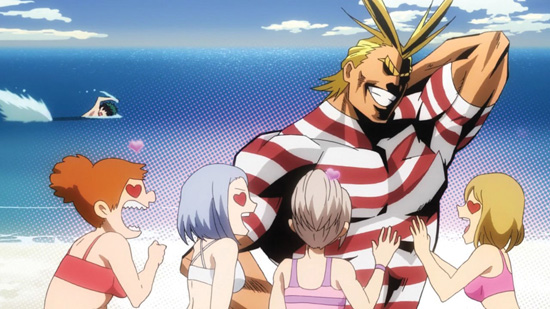
The (Super)Power of Character Designs
One of the many staff members who are the keys to My Hero Academia’s small-screen success is character designer Yoshihiko Umakoshi (Saint Seiya Omega, Grappler Baki OVA). As wonderfully illustrated as Horikoshi’s original manga is, there’s something about My Hero Academia that just screams COLOR. Maybe it’s the way it mixes both eastern and western comic book tropes, or maybe it’s just the downright daring character designs. Naturally that credit goes to Horikoshi himself, but Umakoshi’s colorful means of translating these designs seamlessly into the anime adaptation should be commended. Through their combined efforts, the series reinforces the power of well-designed characters and how they can shape the very world into which they’re placed.
Just off the top of my head, My Hero Academia has the frog-like Tsuyu Asui, also known as Rainy Season Hero “Froppy.” While she does indeed have a “Frog-Form” Quirk that grants her the use of a hyper-extended grappling tongue and more, everything from the way she speaks to the way she stands reinforces her oddball abilities. There’s also Thirteen, who looks like a space-age Michelin Man that can summon black holes; Kouji Koda, a rock-faced dude with the power to communicate with and control animals; Fumikage Tokoyami, who literally has a bird head and can materialize a shadow-like monster; the list goes on and on. Even the
“normal” looking characters like U.A. High’s homeroom teacher Shouta Aizawa, aka Eraserhead, immediately stand out in comparison to the samey designs of other series. That they’re all animated so fluidly is icing on the cake.
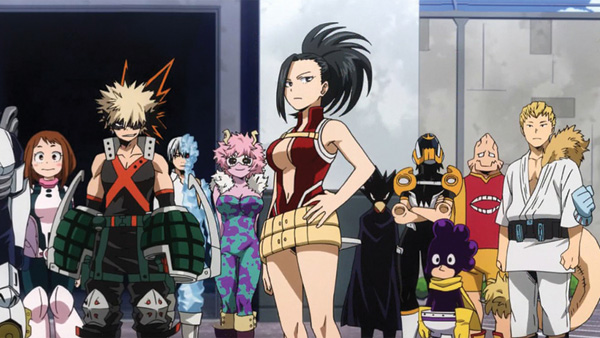
The only downside to all of this fun is that My Hero Academia is only 13 episodes long. Sure, there’s a between-seasons Jump Festa special out in Japan, but we’ll have to wait until the second season to see more of BONES’ TV anime spectacular. At the time of this writing they haven’t even confirmed a time frame for its return, so for now it’s back to the pages of Jump for a weekly dose of tearful, determined heroics.
My Hero Academia is available from FUNimation.



